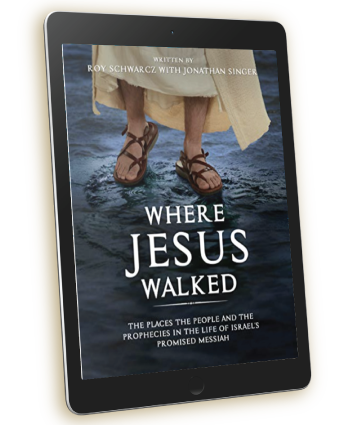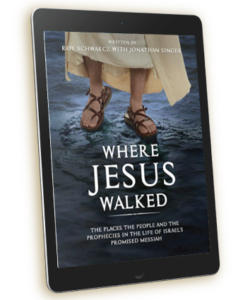Yom Kippur
Yom Kippur Lev. 16
Before God created the world, He knew that Mankind would fall.
He knew that man would sin and rebel against Him.
As someone has said did it ever occur to you that nothing has occurred to God.
And knowing this God planned for his redemption. That plan is seen in Gen 3:15
And I will put enmity between you and the woman, and between your seed and her seed; He shall bruise you on the head, and you shall bruise him on the heel.
God said that through the woman’s seed One would come to crush the head of the serpent. The Rabbi’s taught that the seed would be the Messiah.
God’s redemptive plan was to include an acknowledgment of sin and atonement through the sacrificial system.
Initially sacrifice was offered through the patriarchs, Noah, Abraham Isaac and Jacob then through the tabernacle and Temple.
The plan unfolded throughout history, and at the right time, God provided a final atonement for all mankind.
The world and Israel 2000 years ago were ready for the coming of the Messiah, like no other time before.
This Morning we want to consider the 6th of God’s appointed times, The Day of Atonement.
It is Israel’s Holiest Day and in it God foreshadowed His redemption in the events outlined for this Day in Lev. 16.
Paul wrote in Col. 2:16-17 that the feasts of Israel foreshadow what was to come. Shadows highlight what the artist desires to portray.
As we study Lev. 16 we will see three pictures that Yom Kippur foreshadow of the great redemption God had for His people and the world.
- The first picture is that of “The High Priest”. Show Illustration 1
He foreshadows the Great High Priest an essential element of the New Covenant that was promised to Israel.
The High Priest on Yom Kippur was the one charged with entering the Holy of Holies in the Temple. Show second and third illustrations.
On Yom Kippur, the Temple was closed. This was a day of solitary service by the High Priest.
Every other day the Temple was open for personal atonement but not Yom Kippur, this was the day when the multitude of sins that that had not been atoned for would be covered.
On this day, atonement would be made for the sins of the Nation. Only the High priest was allowed into the Holy of Holies, and Only on the Day of Atonement. Illustration #2
It was the day God made provision for His covenant to be renewed with Israel.
Covering the Ark was the Mercy seat with 2 angels looking down into the Ark. Above the ark was a cloud known as the Shekinah, which was the presence of God. Illustration #3
This was the visible sign to the High Priest of God’s Presence and instilled holy fear. The High Priest put the blood on the Mercy Seat on Yom Kippur.
Can you imagine how Aaron felt as he walked past the veil and into The Holy of Holies? Above the ark of the covenant was the very glory of God.
The Talmud tells us that there were bells sewed into the bottom hem of the High Priests robe. When the High Priest walked around in the Holy of Holies, they would be heard, if the bells stopped ringing, they feared that something had happened to the High Priest.
A rope was tied around his ankle. In case He was struck by God so that his body could be pulled out.
No one dared to enter the Holy of Holies in an unprepared way or he would be struck dead before His Presence. In Lev. 10 the 2 sons of Aaron were struck dead by the Lord when they approached God in an inappropriate way.
Only when the high Priest had made himself ready could he take the blood of the sacrifice into the presence of God. Every year the High Priest bore the heavy burden of being the mediator between God and His people.
Every year he would offer the same sacrifices. No one could be with him; he was alone before God. Today, we have a High Priest but ours is far greater
Our High Priest is Yeshua the Lord. He is our Mediator standing between God and man.
Heb. 7:23 Unlike the other high priests, he does not need to offer sacrifices day after day, first for his own sins, and then for the sins of the people. He sacrificed for their sins once for all when he offered himself.
In Yeshua the fulfillment of the work of the High Priest comes to its fulfillment. As the High Priest bore the burden all alone so too did Yeshua.
Perhaps we can begin to comprehend the crushing load laid on our high Priest. For 3 years Yeshua walked among His disciples modeling what a Godly life looked like.
And on the cross, we see his burden and work reach its cruel and crushing conclusion.
Yeshua is our High Priest. While the High Priest of Israel entered the earthly Temple, Yeshua entered the heavenly Temple.
While the High Priest of Israel entered behind the veil, to offer on an animal which must be done every year, Yeshua shed His blood once for all.
The High priest needed atonement for his own sins while Yeshua his blood for our sin.
The High Priest offered his sacrifice for the nation of Israel
Yeshua for the whole world.
Yeshua is the reality of what the High Priest foreshadowed, He is ’The Great High Priest”. Who provided everlasting atonement for all who will come to Him.
The Second Picture we see is “The Scapegoat” and it’s a picture of Redemption and substitution. Lev. 16:7 instructed the High Priest to take two goats.
The ones used were Syrian Goats. They were one of the most valuable of domestic animals. (Illustration)
They were brought to the entrance of the Tabernacle. And there the fate of each was determined by the lots in the priests Ephod. One goat was to be sacrificed and the other was to be the scapegoat.
God declared that blood must be offered in exchange for the sin of Israel. Blood is the life element for all mammals. The High Priest slit the throat of the goat and its blood was collected in a special bowl.
The blood was then carried by the High Priest into the presence of God in the Holy of Holies and placed on the Mercy Seat.
The sacrificed Goat symbolized the exchange of life required by God for sin and for the renewal of the covenant. The 2nd goat symbolized to the people the results of the atonement.
The High Priest placed His hand on the scapegoat putting on it the sins of Israel. Then the goat was sent into the desert, carrying with Him the sins of the people.
“The Scapegoat” in the light of the New Covenant is a picture of Yeshua our Redeemer. For over 1400 years God saw the endless sacrifices of lambs, rams and goats.
These were looking forward to the true atonement. The True Lamb of God would be led like a lamb to the slaughter. Just as the prophet Isaiah had foretold 700 years earlier.
Isaiah 53:6-8 We all, like sheep, have gone astray, each of us has turned to his own way; and the Lord has laid on him the iniquity of us all.
He was oppressed and afflicted, yet he did not open his mouth; he was led like a lamb to the slaughter, and as a sheep before her shearers is silent, so he did not open his mouth.
By oppression and judgment he was taken away. And who can speak of his descendants? For he was cut off from the land of the living; for the transgression of my people he was stricken.
Yeshua shed His blood, paid our penalty, and suffered our death.
He rose from the dead – and as our High Priest carried his blood of atonement into heaven removing our sin. He was God’s scapegoat and bore our sin willingly.
The Last Picture of Yom Kippur has to do with our response. While Yom Kippur was for the nation of Israel and not the individual there was a part that each individual had on that day.
He had to deny himself and do no work. In the light of the New Covenant, we see that it is different than the other pictures.
It’s a picture of an action we must take. Yeshua’s death burial and resurrection has made forgiveness of sin and eternal life a “great possibility” for everyone.
But this possibility will be reality only if we make a great decision.
To place our faith in God’s Lamb, and receive the risen Yeshua as Lord of our lives.
When the Temple stood, one had to decide to participate in what it offered. A great decision had to be made to bring and kill the Lamb and trust that God will forgive me and bring atonement.
It involved obedience, humility and submission, it involved surrender of your life to God as Lord. The same is true today. But the Lord has come in the Person of Yeshua and God says to us receive His son.
To make Him Lord of your life for Yeshua said I am in Him and He is in me. How will you respond?
Additional notes
Yom Kippur
This actually was a day when only the Kohn Gadol (High Priest) would intercede for all Israel. Lev. 16:30-34. Why the Messiah had to die is rooted in what the Day of Atonement foreshadowed. Yom Kippur was not for individual atonement but for the nation.
There were daily sacrifices offered in the Temple. When a Jewish person sinned he was not to wait until the day of atonement he was to go immediately to the Temple and make an offering of blood. He would then experience atonement. Atonement comes from the word Kippur and means literally Covering.
There are actually three things that we can do with our sins. Either we will ignore them pretending that they don’t exist, or rationalize them away. Or we will try to work them off seeking to be justified by our good deeds. Or we will respond God’s way by receiving what he has done.
According to the Law and the prophets God hid his face from the soul that sinned. Isaiah 59:2 The way God provided for fellowship to be restored to us was through the sacrifices. The blood of the offering would cover our sins that He might look upon us once again. This is most important in understanding the reason for Jesus’s death. The prophets foretold that the Messiah would be our atoning sacrificial Lamb (Isaiah 53).
As the Jewish people would bring a lamb to the Temple and lay its hands on it in requirement of Lev. 1. So too must we recognize that Jesus is our Lamb. We like Israel must lay our hands upon the Lamb of God. Confessing that it was for MY sin that Jesus died.
It was MY Sin that killed Jesus. If we do not lay our hands upon the Lamb of God and ask that His Blood be upon us, then we cannot be reconciled to God.
On Good Friday 2,000 years ago we read that the veil in the Temple was torn assunder (Mat. 27:51) the Holy of Holies was now defiled. When Jesus died on the Cross access to the Ark of the Covenant and the Mercy seat was no longer available. Because God had provided another means of Atonement. Then in 70 A.D. The Temple was destroyed. No longer was there a Biblical means of atonement and reconciliation to God.
Rabbi Jochanon Ben Zakki the chief leader of the Orthodox community came up with an alternative. He taught Israel that Repentance was still necessary and so too was prayer, but that the sacrifice now must be our Tzedaka. Our Good Deeds. This contradicts the teaching of the prophets. Isa. 64:6
The Rabbi who taught that prayer, repentence and good deeds would be adequate to atone for our sins was not too convinced of his own teaching. Listen to his words as recorded in the Talmud.
“When R. Jochanan Ben Zaccai was taken ill, his disciples said unto him, ‘O Light of Israel, Pillar of the Right Hand, Strong hammer, why dost thou weep? He answered and said unto them…
‘Now when I am to be led into the presence of the King of kings, the Holy One, blessed be He, who lives, and is through all eternities, whose anger if He is angry with me is an eternal anger: Whose fetters if He will bind me are everlasting fetters and whose death if He put me to death is an eternal death; whom I cannot appease with words, nor bribe with money; and not only so, but two ways open before me the one leading to Paradise and the other to hell (Ghenna), and I do not know upon which of these two ways I shall be led, shall I not weep?”
According to the Law Israel was called to understand certain spiritual truths These truths apply to us as well:
1. Israel was called to be Holy. Lev. 19:2 “You shall be holy: for I the Lord your God am
Holy”.
Anytime The nation or individuals deviated from God’s Holiness, they violated God’s this is what sin is.Obviously all of us have sinned. Shlomo Melech said “For there is not a just man upon the earth, that doeth good, and sinneth not.”
Because God is Holy and righteous He must judge man’s sin and reject it. Nahum the prophet of Israel wrote “The Lord is slow to anger and great in power, and the Lord will by no means leave the guilty unpunished.”
Sin causes spiritual death and results in separation from God. The prophet Isaiah spoke this truth “Your iniquities have made a separation between you and your God, and your sins have caused him to hide his face from you.”
In Order for us to experience forgiveness one must truly understand this reality.
2. We need to also understand that we cannot remove this barrier that separates us from God by our own efforts “We are all as an unclean thing and all our righteousness (good deeds) are like as rags.” Isa. 64:6
How is this barrier removed? God takes the initiative and provides for us as he provided for Noah, as he provided for Jacob. He has given us a covering, a Kapher.
In the time of the Temple the Kaphar was the blood of the animals offered daily in the sanctuary. The person who sinned placed his hand upon the animal and the blood that was shed was a Kapher. In fact can anyone really know that his sins are forgiven? Can anyone truly know that they have eternal life? The answer was yes while the Temple stood.
But before the Temple was destroyed God gave the promised final atonement in the Messiah. Isaiah 53.
In the Talmud there is an allusion to the final atonement spoken of by Daniel and Isaiah. It is found in the tractate Yoma 5B, and concerns the historical account of Azzazel the Scapegoat spoken of in Lev. 16.
Leviticus 16:7 Then he is to take the two goats and present them before the LORD at the entrance to the Tent of Meeting. {8} He is to cast lots for the two goats__one lot for the LORD and the other for the scapegoat. {9} Aaron shall bring the goat whose lot falls to the LORD and sacrifice it for a sin offering. {10} But the goat chosen by lot as the scapegoat shall be presented alive before the LORD to be used for making atonement by sending it into the desert as a scapegoat.
In the Talmud there is an allusion to the final atonement spoken of by Daniel and Isaiah. It is found in the tractate Yoma 5B, and concerns the historical account of Azzazel the Scapegoat spoken of in Lev. 16:7-10. A scarlet thread was place around the goat, after the final offering of the Lamb in the Holy of Holies the High Priest would lay his hands on the goat and the scarlet thread was removed.
The thread was placed on the outside of the Holy Place for all to see. The goat was then driven into the wilderness where it died. The scarlet thread, according to the Talmud, changed from red to white at the death of the scapegoat. It was a sign to the people that their sins were forgiven. But the thread stopped changing color about 35 years before the Temple was destroyed. The Talmud writer wonders why? We who believe that Jesus is the Messiah understand that Jesus died at that time.
The curtain that separated the Holy Place from the Holy of Holies was torn which was a sign to the priesthood and all Israel that God had made national atonement through another means, Jesus. National Atonement will be accomplished in the future with the Second coming of Jesus as prophesied in Zech. 12:10.
The Messiah died on Passover and rose again on the Jewish feast of first fruits. Will you apply the blood to your life?.


